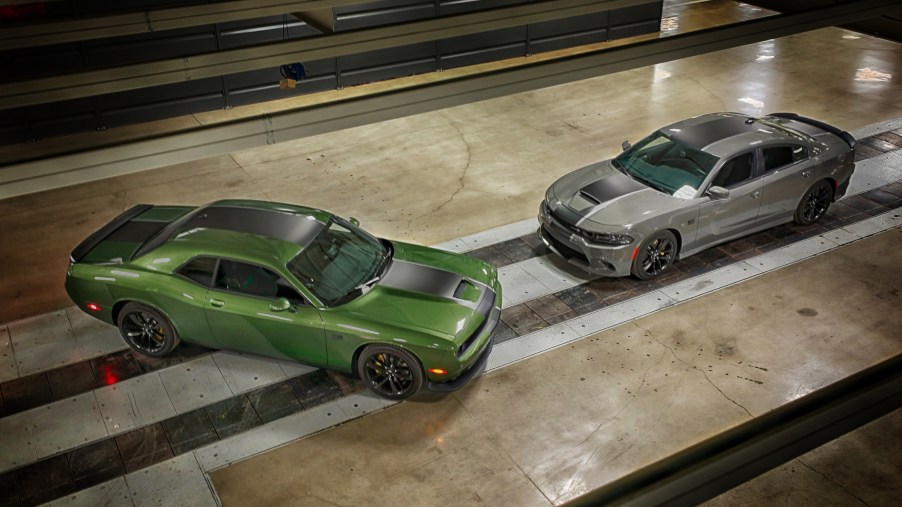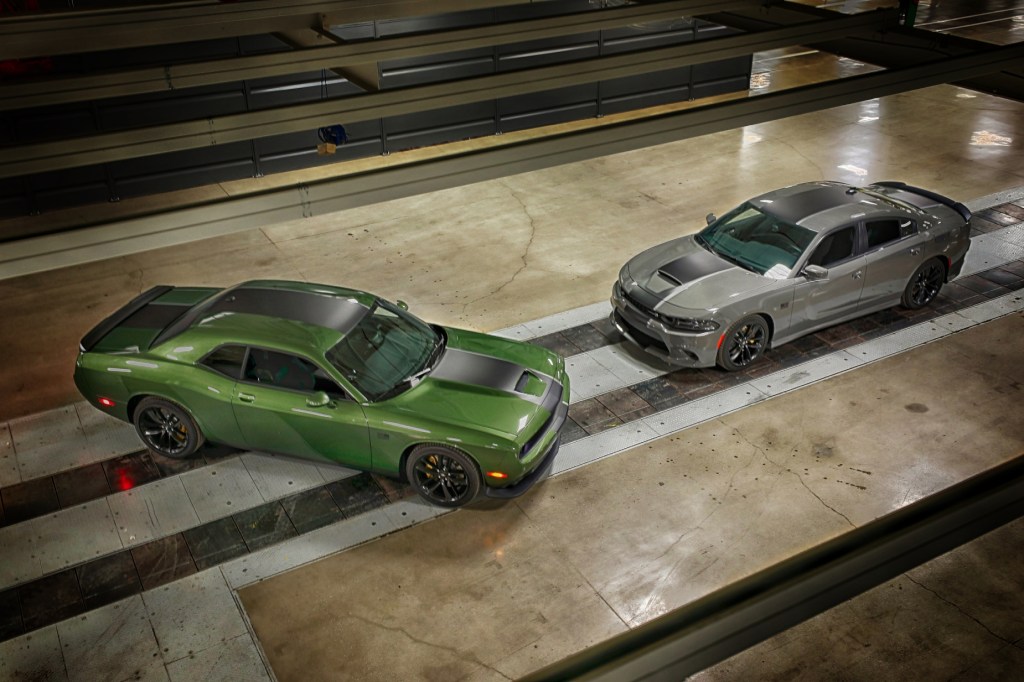
Some call the Dodge Charger and Dodge Challenger modern classics. Others say these muscle cars are relics. Regardless, the current iterations of these models are here to stay for a while longer.
Dodge’s flagship cars have remained popular in recent years, despite being built on an aging core. Dodge revived the Charger in 2005 and the Challenger in 2007, and the latest incarnation of these vehicles still largely resemble the original models.
According to CNET, Fiat Chrysler Automobiles’ recent financial deals indicate that the manufacturer won’t redesign the Dodge Charger or Challenger until at least 2024.
Is staying the course with Dodge’s muscle cars the right move for FCA, or will interest eventually fade in these dated platforms? Let’s take an in-depth look at what’s going on behind the scenes, as well as the recent history of the Dodge Charger and Dodge Challenger.
FCA invests in ‘today’ as well as ‘tomorrow’

The Dodge Charger and Dodge Challenger are assembled in Brampton, Ontario. CNET’s report stated that FCA agreed to a three-year labor extension with Unifor, a Canadian auto union. Plus, FCA invested 50 million Canadian dollars for Unifor to create additional iterations of the Charger and Challenger.
This deal was a part of a larger agreement, which included a CA$1.58 billion-investment to build EV and plug-in hybrid platforms.
FCA’s North American COO, Mark Stewart, commented on the agreement in an FCA press release. He said, “This agreement bolsters our global competitiveness and positions us for future growth with new product investment and new jobs, while also demonstrating our commitment to our employees, their families and the communities we represent.”
Although Dodge’s muscle car production will go on for the next few years, FCA’s recent negotiations in Canada point toward a greener tomorrow. This makes it difficult to tell what future, if any, lies ahead for the high-octane Dodge Charger and Dodge Challenger.
The Dodge Charger and Dodge Challenger are rooted in tradition
Gearheads have anticipated what the next generation of muscle cars would look like for quite some time. The 2015 Ford Mustang signaled that changes were on the horizon when it adopted a standard turbocharged four-cylinder engine. The Chevy Camaro followed suit a year later, and the Camaro’s days are numbered. However, Dodge has remained true to its heritage, only offering robust V6 and V8 engine options.
Dodge last redesigned the Charger for the 2011 model year, giving it some much-needed design tweaks and upgrading its standard engine. Meanwhile, Dodge gave the Challenger a facelift for the 2015 model year. Both vehicles have since been outfitted with driver-assist technologies and modern features like Apple CarPlay. These additions, while welcome, haven’t done enough to keep these models competitive with newer-platform competitors.
However, Dodge has garnered interest in a different way. Other manufacturers have raced to incorporate the most innovative technologies into every model. Meanwhile, Dodge, in true American fashion, has worked to outperform the competition, literally.
The Dodge Charger and Dodge Challenger Hellcat models shattered the norms of what it meant to be a street-legal car. Producing insane horsepower, which ranges from 707 to 808, these Hellcat models are essentially supercars.
Naturally, the Hellcat trim is too expensive for the average consumer, but it is still an excellent branding tool for Dodge. Essentially, the Dodge Charger and Dodge Challenger are able to live on due to earned respect. Both models have affordable trims with V8 engines that deliver enough thrills to back up the brand’s tough image.
These modern classics aren’t crossing the finish line yet
The automotive industry has changed a lot since the Dodge Charger rejoined the road in 2005. However, this brawny sedan and its coupe brother have been mainstays that car enthusiasts can always count on and won’t change in the near future.
What lies ahead after 2024 is still unknown. Perhaps the Dodge Charger and Dodge Challenger will take on new forms to become more efficient or eco-friendly. But no one would put it past Dodge to buck the trend and to see just how insanely powerful it can make the next generation of its iconic muscle cars.


